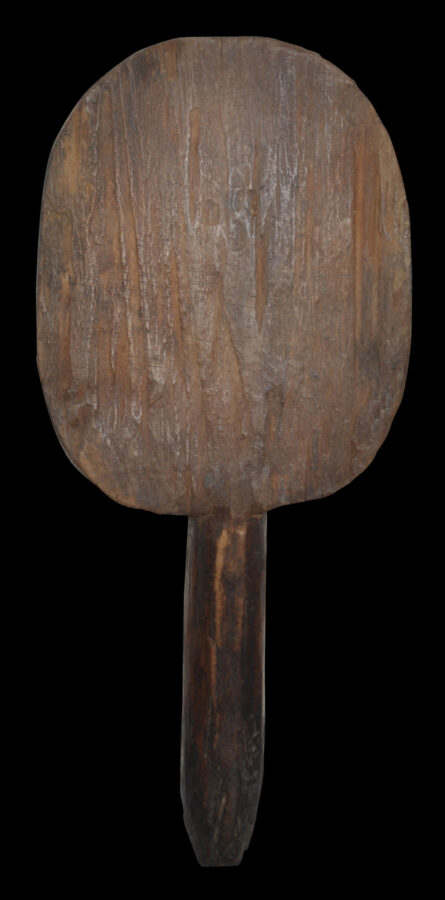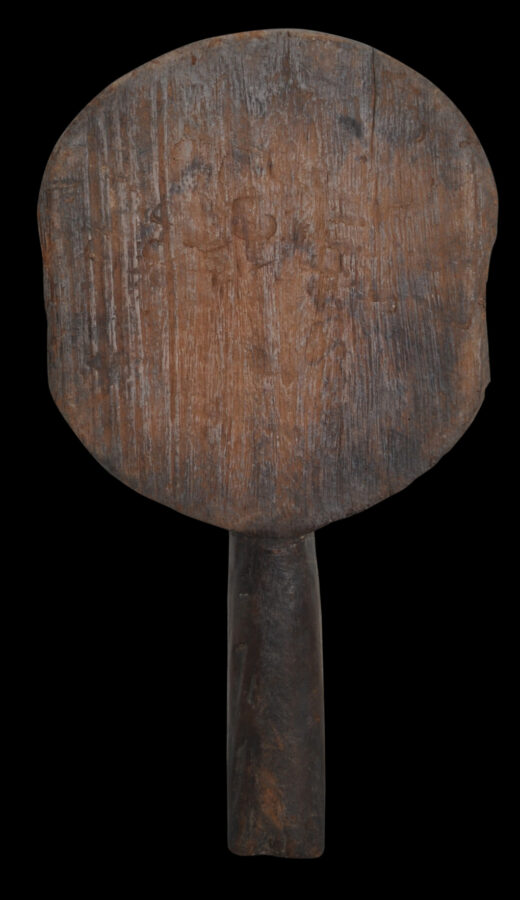These paddles, each carved from a single piece of wood, were used to even up bundles of rice stalks, before being taken from the rice field, back to the village, where they would be dried and stored in rice barns and later threshed.
They have a thick handle, and are smooth on one side and carved in high relief on the other with auspicious faces. The faces both have long earrings and are framed with petals.
They were used in the 19th century and into the 20th century, but eventually their use was phased out as new strains of rice were introduced to Bali in the 1960s which had much shorter stems and with the grains more loosely attached to the stalk. Thereafter, most rice was threshed in the fields rather than being stored on the stalk in rice barns.
The ‘smooth’ side in the examples here is in fact furrowed and rough from ample use. The handles have been worn smooth from handling.
A very similar example from the Tropenmuseum of the Netherlands is illustrated in Reichle (2010, p. 140).
The examples here are in excellent condition but with obvious and a good, varying patina.
References
Reichle, N. (ed.), Bali: Art, Ritual & Performance, Asian Art Museum, 2010.









